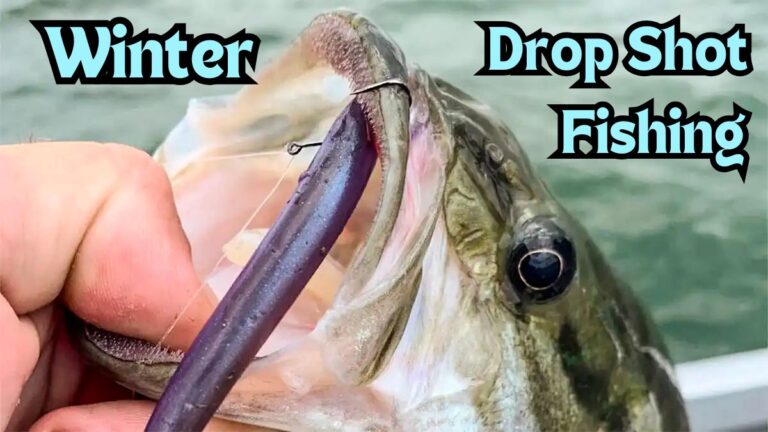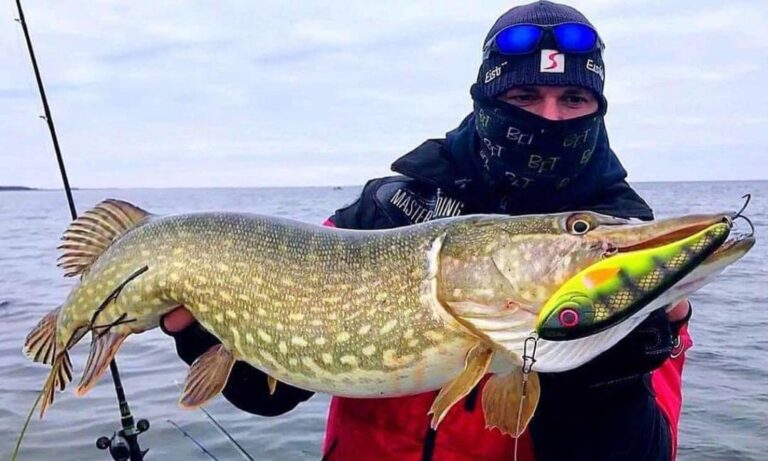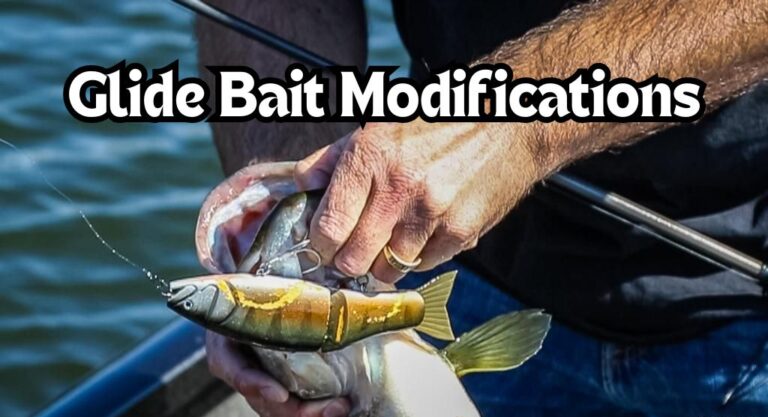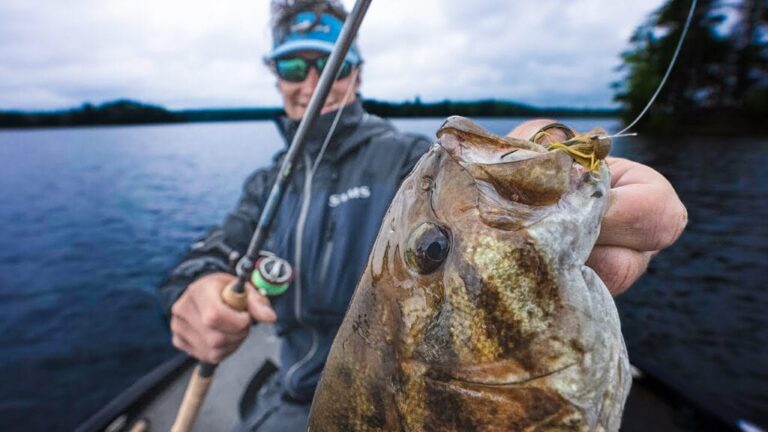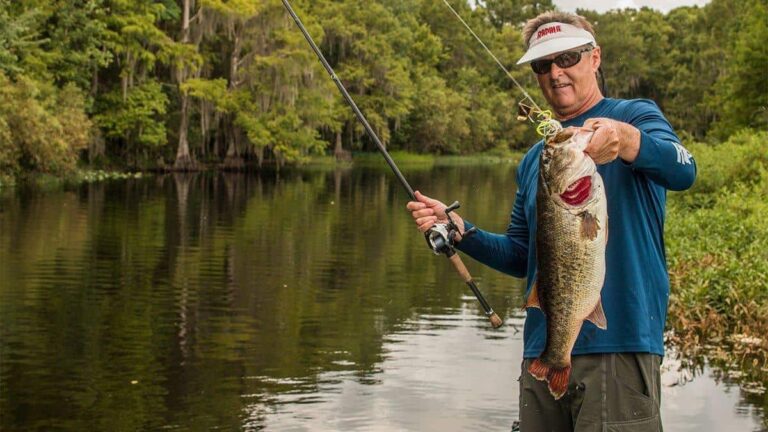Best Bluegill Lures for Bass: Baits to Imitate Bluegill
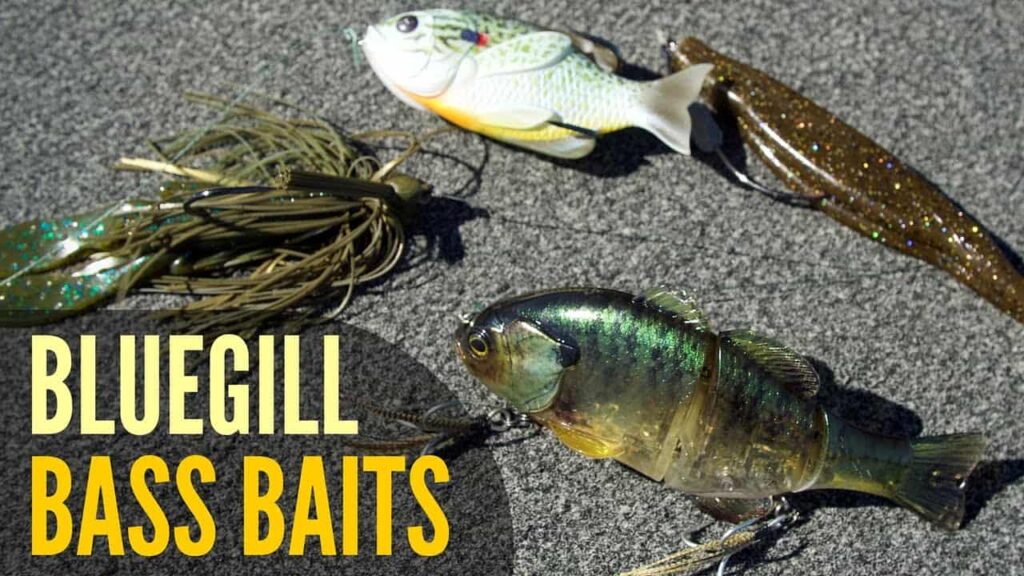
Bass absolutely love to eat bluegill. Bluegill are the primary forage of bass in most bodies of water.
To catch tons of big bass, you need to be throwing some bluegill imitation lures.
Today, we are going to be breaking down the best bluegill lures for bass. We will go over what they are and how, when, and where to use them.
Best Bluegill Imitation Lures for Bass
1. Bluegill Swimbaits
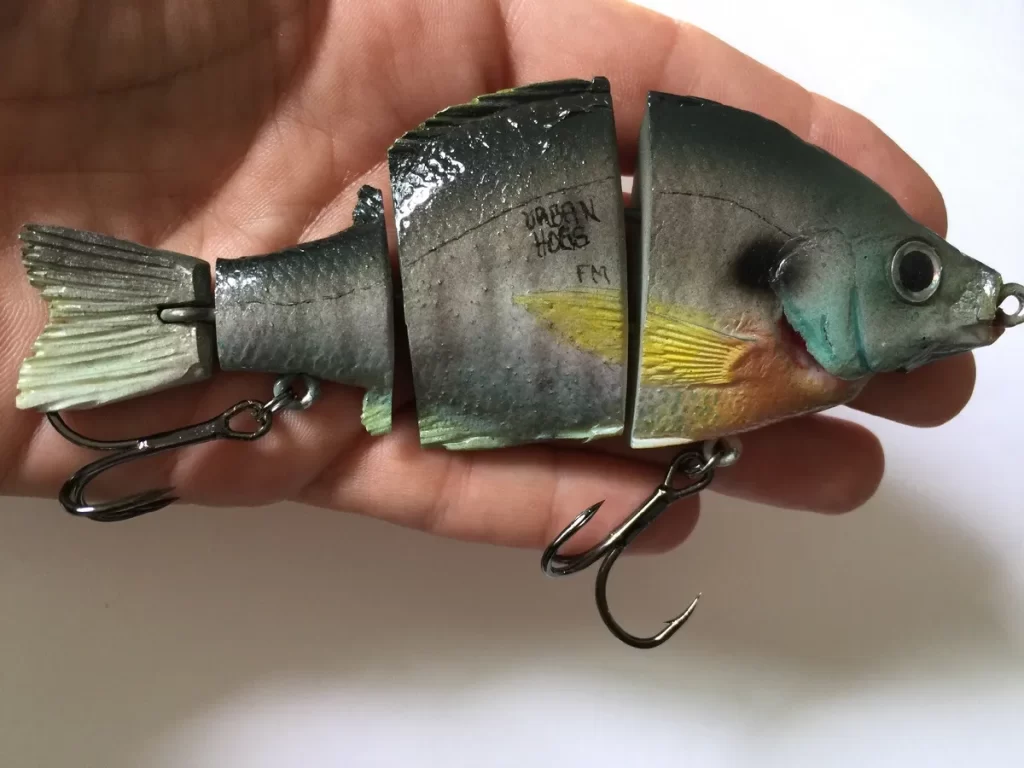
Bluegill swimbaits are super fun lures to throw, and are the most realistic bluegill presentation out there.
These swimbaits are built to look exactly like a bluegill. The colors, profile, and swimming action are all super realistic and are perfect for catching bass that are feeding on bluegill.
One signature characteristic of bluegill swimbaits is that they catch big bass. The big profile and realistic action is exactly what huge bass are looking for.
Different Swimbait Styles
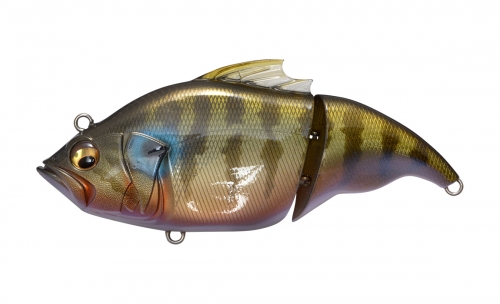
The hard-body swimbaits are a bit more popular. I personally prefer the action of the jointed lures a bit better. the swimming motion is more natural and enticing. The jointed style swimbaits seem to get more bites overall. However, the hookup ratio is a bit lower. Bass often just slap at the swimbaits and don’t get the hanging treble hooks in their mouth.

The soft-body bluegill swimbaits are less popular, but still catch tons of bass. The paddle-tail lures have a single hook that is easier for bass to fit in their mouth. This single hook also really sticks in the bass, and doesn’t give them leverage to spit the bait. The paddle tail action is a bit more subtle and can be better for finicky bass.
When to Use Bluegill Swimbaits?
The real advantage of these lures is their realism. Realistic lures are going to work the best in clear water.
Since bass can get a great look at your lures in clear water, you need to be using lures like swimbaits that perfectly mimic their forage.
In muddy water, bass are either not going to be able to find the swimbait or miss the lure and not get hooked.
Shallow, clear water is the ideal scenario for these lures. Swimming them around grass lines and outside of bluegill beds is absolutely killer from the post-spawn to the fall.
Best Bluegill Swimbaits
- Catch Co. Baby Bull Bluegill
- 6th Sense Trace 4K Bluegill
- Bass Pro XPS Bluegill
- Smash-Tech Little Weedless Bluegill
For full list breakdown: 7 Best Bluegill Swimbaits
2. Swim Jig

The swim jig is probably the most versatile bass lure on the market. You can swim it, hop it, flip it, burn it, and almost anything else.
Bluegill love hiding in grass, wood, and other cover. So you need to have some lures that you can fish this cover without getting hung up.
The thick weed guard and pointy head shape allows for the swim jig to glide right through all types of structure without getting hung up at all.
This versatility is essential to catch bass in all circumstances. And there are also plenty of good swim jig options on the market.
Different Swim Jig Styles
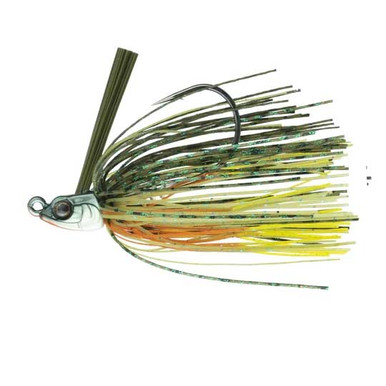
The weed guard and fixed hook style of swim jig is definitely the most popular. This style has the classic, thick, fixed hook and thick weed guard that comes standard on all types of bass jigs. The weed guard creates a super weedless lure, and the fixed hook really sticks into bass so that you don’t lose them. As long as you are properly setting the hook, the hook will come right through the weed guard and you will have no problems hooking into bass.
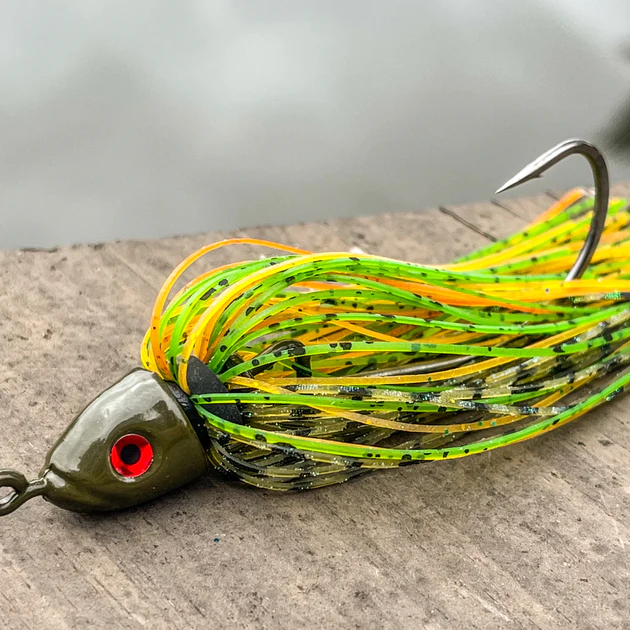
The worm hook style of swim jigs came out a few years ago. Some of these jigs have fixed hooks and some have free swinging hooks. Rather than having a weed guard, these jigs use the worm hook design to create the weedless presentation. This will make it easier for bass to get hooked, but won’t be quite as weedless as the hook can become exposed much easier.
When to Use Swim Jigs?
Any time there are bluegill up in shallow cover, tie on a swim jig.
You can fish it in grass, lily pads, wood, rocks, and any other cover where bass are feeding on bluegill.
Swim jigs aren’t the most realistic profile, so it is best to fish them in slightly stained water so that bass don’t get quite as good of a look at it.
Best Swim Jigs
- Strike King Heavy Cover Swim Jig
- Dirty Jigs Swim Jig
3. Square Bill Crankbait

The square bill crankbait is an aggressive shallow water lure with a great bluegill profile.
The thick and wide body shape of a square bill looks exactly like a bluegill.
And with the limitless color choices, you can get very realistic bluegill patterns or more flashy ones for muddy water.
Square bills put off tons of vibration, making them a fantastic search bait for bass that are feeding on bluegill.
When to Use Square Bill Crankbaits?
The square bill crankbait is my favorite open water bluegill imitation.
The wide wobble and loud rattles in the square bill can call bass in from a long distance.
So use this lure as a search bait in shallow water. It really works all the way from the pre-spawn to the mid to late fall season.
But my two favorite seasons are post-spawn and fall.
Best Square Bill Crankbaits
- Strike King KVD Square Bill
- River2Sea Biggie Smalls
- XCalibur Square Bill
4. Chatterbait
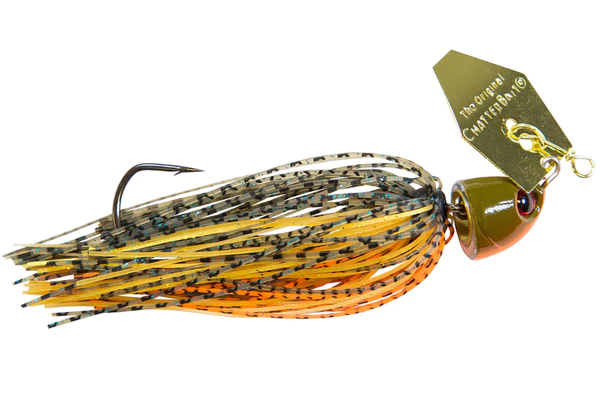
The chatterbait is kind of like a mix between the swim jig and the square bill.
It has the profile and look of the swim jig, but the thumping vibration of the square bill.
Chatterbaits are my favorite muddy water bluegill lure for bass.
Chatterbaits put of so much vibration, and something about skirted lures work extremely well in low visibility water.
When to Use Chatterbaits?
Chatterbaits seem to work best during the pre-spawn and the fall seasons.
During the pre-spawn, slow rolling a chatterbait in transition zones is absolute money.
And in the fall, you really can’t go wrong no matter how or where you fish it.
Chatterbaits are going to work best when bass are very active and aggressive.
So during feeding times or low barometric pressure, tie on a chatterbait.
Best Chatterbaits
- Z-man Original Chatterbait
- Strike King Thunder Cricket
What Colors Imitate Bluegill?
Obviously, painted bluegill patterns are the most realistic color options. But when it comes to general colors, these are the best colors to imitate bluegill:
- Green Pumpkin
- Brown
- Yellow
- Black (in muddy water)
Match Lure to Natural Bluegill Size
The size of sunfish and bluegill will depend on the pond, lake, or river that you are fishing.
Sometimes they are only a few inches long, and other times they get up to 8-9 inches.
Take a close look at the bank and figure out the size of the bluegill in your body of water. Try to choose lures that are closest to them.
FAQ
Why Are Bluegill Lures Effective for Bass?
Bluegill are a staple in the diet of bass, making lures that resemble them highly effective for attracting bass.
Bass are instinctively drawn to bluegill due to their availability and the ease of catching them.
Using bluegill lures increases the likelihood of enticing bass to strike.
Where to Fish Bluegill Imitation Lures?
These lures work best in shallow water. Especially shallow cover such as grass and wood. Bluegill love hanging the shallow, warm water cover.
Are Bluegill Lures Effective Year-Round?
Bluegill lures can be effective year-round, but their effectiveness may vary depending on the season and prevailing weather conditions.
During the spring and summer months, when bluegill are more active and abundant, these lures tend to be particularly effective.
However, bass will still prey on bluegill throughout the year, making bluegill lures a viable option in any season.
Reeling this In
You can never go wrong using a bluegill imitation. Bass feed up on bluegill all year long and in every body of water across the nation.
Bluegill are an easy and hardy meal that bass of all sizes love.
Swimbaits, swimjigs, square bill crankbaits, and chatterbaits are your four best options when trying to best mimic a bluegill.
Although bass eat bluegill year round, they are bass’s primary forage during the warmer months.
So once the water warms up a bit this year, tie on these lures and start reeling in some big bass.

